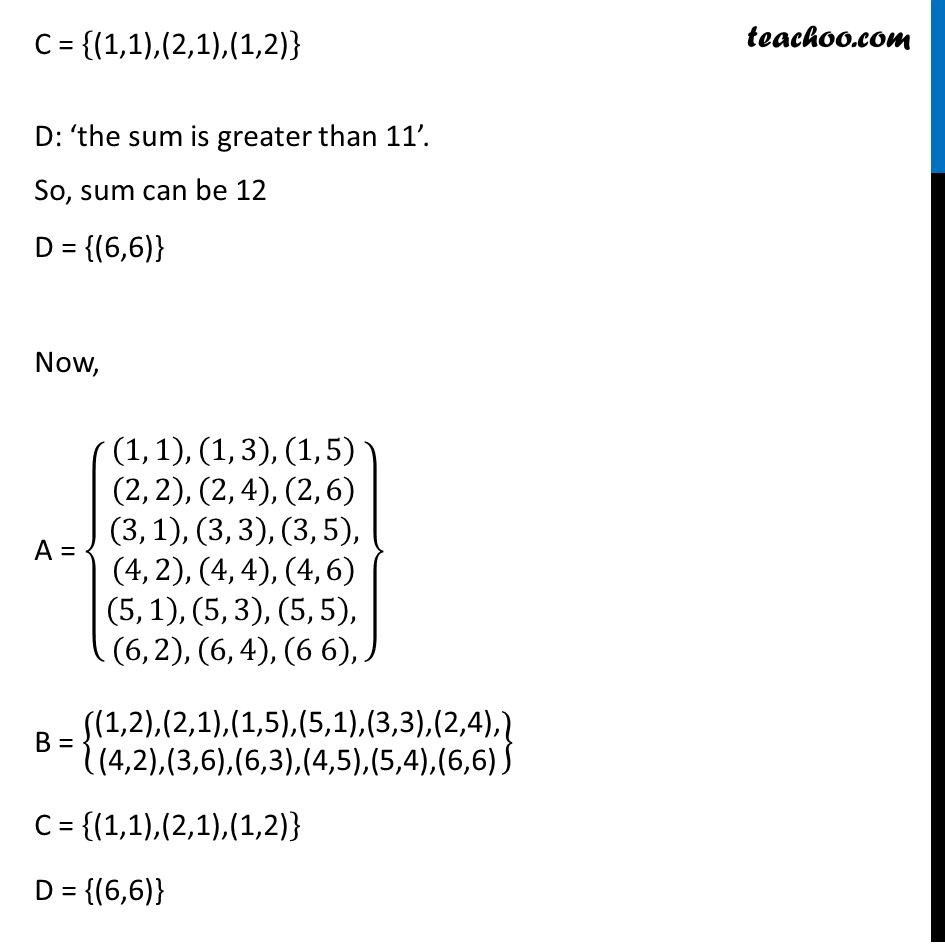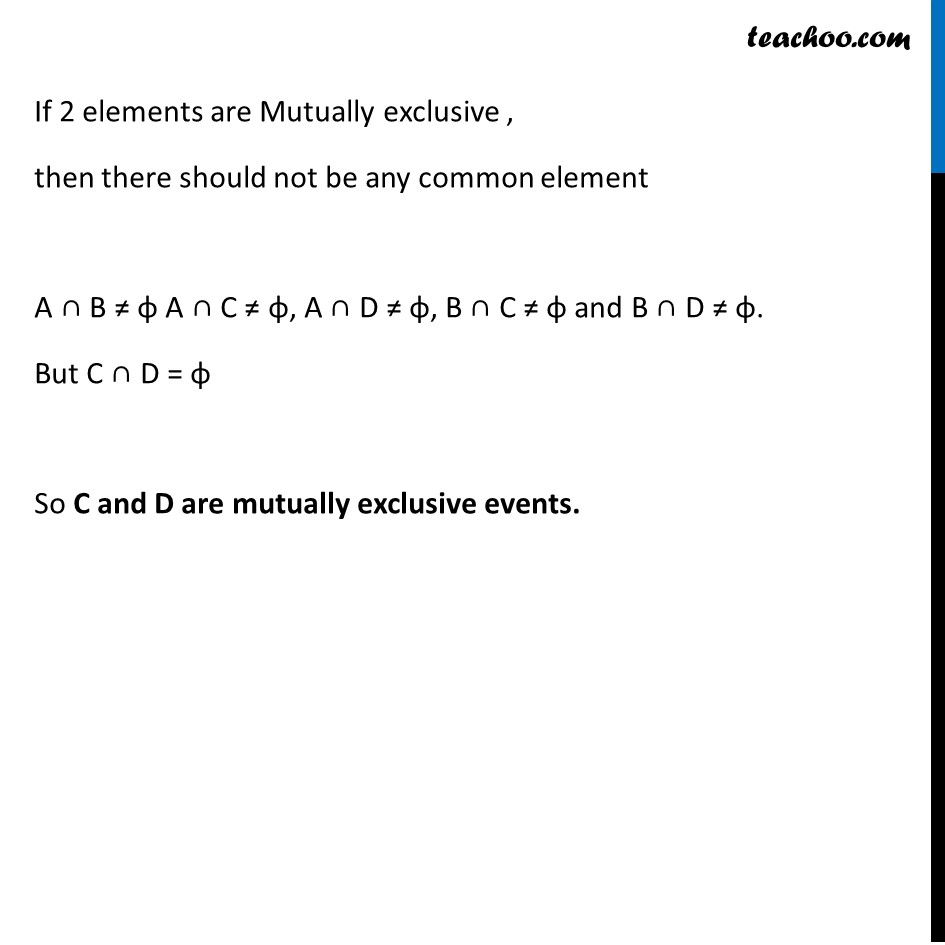



Examples
Examples
Last updated at Dec. 16, 2024 by Teachoo




Transcript
Example 2 Two dice are thrown and the sum of the numbers which come up on the dice is noted. Let us consider the following events associated with this experiment A: ‘the sum is even’. B: ‘the sum is a multiple of 3’. C: ‘the sum is less than 4’. D: ‘the sum is greater than 11’. Which pairs of these events are mutually exclusive? If two dice are thrown then possible outcomes are 1, 2, 3, 4, 5 & 6 on both dies Hence S = 1, 1,1, 2,1, 3,1, 4,1, 5,1, 62, 1,2, 2,2, 3,2, 4,2, 5,2, 63, 1,3, 2,3, 3,3, 4,3, 5,3, 64, 1,4, 2,4, 3,4, 4,4, 5,4, 65, 1,5, 2,5, 3,5, 4,5, 5,5, 66, 1,6, 2,6, 3,6, 4,6, 5,6 6, A : the sum is even So, Sum can be 2, 4, 6, 8, 10, 12 A = 1, 1,1, 3, 1, 52, 2, 2, 4, 2, 63, 1,3, 3,3, 5,4, 2, 4, 4, 4, 65, 1,5, 3,5, 5, 6, 2,6, 4,6, 6, B: The Sum is multiple of 3 the multiple of 3 are 3, 6, 9, 12 B = (1,2),(2,1),(1,5),(5,1),(3,6),(2,4),(4,2),(3,6),(6,3),(4,5),(5,4),(6,6) C: Sum is less than 4 Hence sum possible are 1, 2 and 3 C = (1,1),(2,1),(1,2) D: ‘the sum is greater than 11’. So, sum can be 12 D = {(6,6)} Now, A = 1, 1,1, 3, 1, 52, 2, 2, 4, 2, 63, 1,3, 3,3, 5,4, 2, 4, 4, 4, 65, 1,5, 3,5, 5, 6, 2,6, 4,6 6, B = (1,2),(2,1),(1,5),(5,1),(3,3),(2,4),(4,2),(3,6),(6,3),(4,5),(5,4),(6,6) C = (1,1),(2,1),(1,2) D = {(6,6)} If 2 elements are Mutually exclusive , then there should not be any common element A ∩ B ≠ φ A ∩ C ≠ φ, A ∩ D ≠ φ, B ∩ C ≠ φ and B ∩ D ≠ φ. But C ∩ D = φ So C and D are mutually exclusive events.